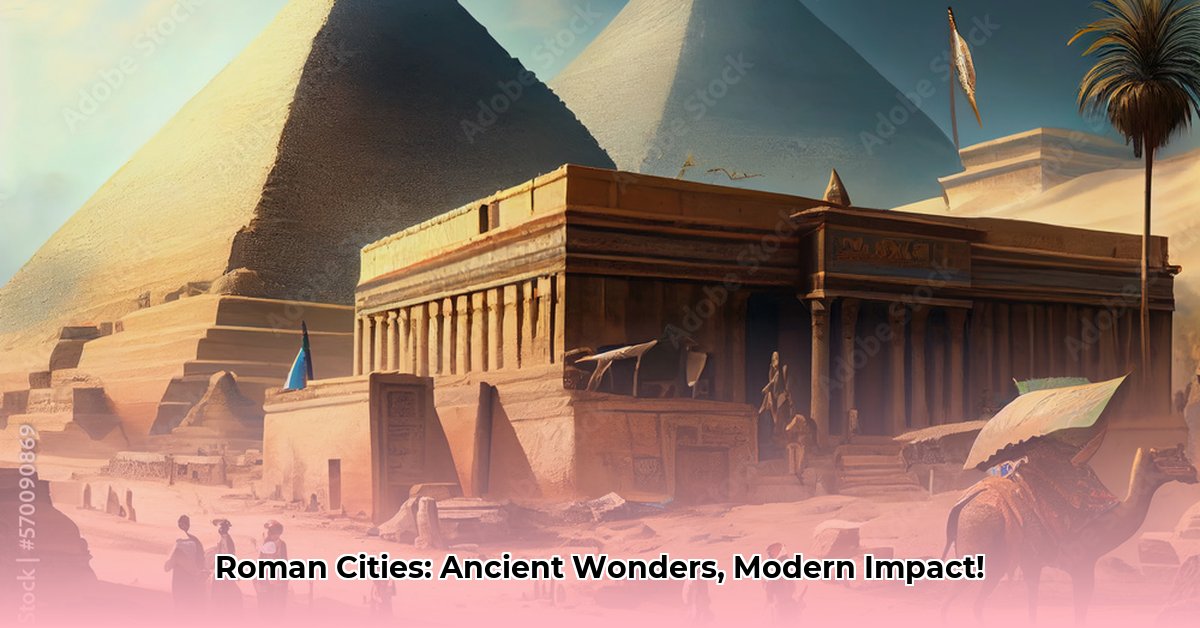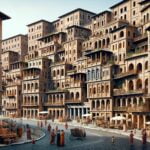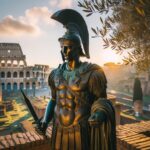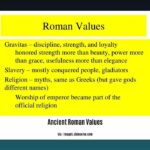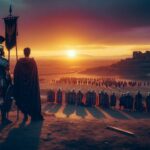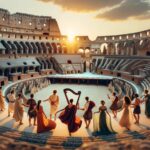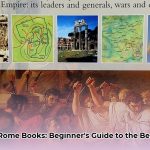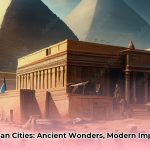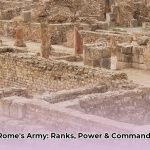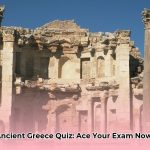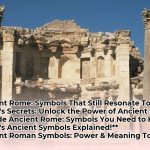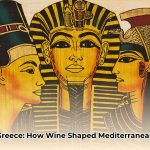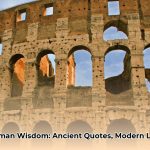Ever walked through a modern city, marveling at its organized streets, public spaces, and sophisticated infrastructure? Chances are, you’re experiencing the echoes of an empire that peaked two millennia ago. The Roman Empire wasn’t just about conquering lands; it was a masterclass in urban development, dotting its vast territories with meticulously planned cities that served as powerhouses of trade, governance, and culture. These ancient metropolises weren’t just collections of buildings; they were living, breathing entities, strategically engineered to support an empire of immense scale and complexity. You can visualize this empire’s reach with a labeled Rome map.
In this deep dive, we’ll journey through the heart of Roman urbanism, exploring the foundational principles that guided their city planning, examining iconic examples like Rome, Pompeii, and Ephesus, and uncovering lesser-known but equally vital hubs such as Londinium, Lutetia, and Constantinople. Beyond the architectural marvels, we’ll uncover the secrets to their longevity, analyze how their innovations continue to shape our urban landscapes, and derive actionable insights for contemporary urban planners, historians, and those intrigued by the intricate tapestry of human civilization.
The Roman Urban Blueprint: A Symphony of Order and Engineering
The hallmark of Roman city design was its unwavering commitment to order. Typically, cities were laid out on a precise grid system, a testament to efficiency, organization, and military precision. Central to this grid were two main avenues: the cardo, running north-south, and the decumanus, running east-west. Their intersection often marked the symbolic and functional heart of the city. This standardized layout not only facilitated easy navigation but also allowed for rapid construction and expansion, reflecting Rome’s pragmatic approach to growth.
At the very core of every Roman city lay the forum, an multi-functional public square that served as the vibrant epicenter of daily life. More than just a marketplace, the forum was an integrated complex housing temples, government buildings, basilicas (law courts), and spaces for public assemblies. It was where politics buzzed, commerce thrived, and citizens gathered, truly encapsulating the social, political, and economic pulse of the community. Surrounding the forum, one might find a diverse range of housing, from opulent villas for the wealthy elite to multi-story insulae (apartment buildings) providing shelter for the working classes, reflecting the empire’s nuanced social hierarchy.
What truly set Roman cities apart, however, was their unparalleled infrastructure. The iconic aqueducts, gravity-defying feats of engineering, channeled fresh water from distant sources into cities, supplying public baths, fountains, and private homes. These structures, often spanning miles with impressive arches, symbolize Roman ingenuity and their commitment to public health and convenience. Complementing water supply was the sophisticated sanitation system, epitomized by the Cloaca Maxima, one of the earliest and most effective sewer systems, which removed waste and drained marshlands, contributing significantly to urban hygiene.
Beyond internal city systems, a vast network of Roman roads connected urban centers across the empire. These meticulously constructed arteries, often featuring multiple layers of packed earth, gravel, and stone, facilitated rapid military deployment, efficient trade, and seamless communication. City walls, thick and imposing, provided crucial defense, marking the boundaries of civilization and offering protection against external threats, particularly for settlements near the empire’s frontiers. The comprehensive nature of this urban blueprint — from street planning to water management and defense — was a significant factor in the empire’s long-term stability and prosperity.
Rome: The Eternal City’s Grand Design and Enduring Influence
The journey into Roman urbanism must begin with Rome itself, the “Eternal City” and the undisputed capital of the empire. What began as a collection of small settlements on the Tiber River blossomed into a sprawling metropolis, a testament to constant growth, adaptive planning, and monumental ambition. Its evolution from a humble village in 753 BC to the center of the known world showcases an unparalleled trajectory of urban development.
At its peak, Rome was a marvel of architectural prowess and civic organization. The Colosseum, a colossal amphitheater, remains an enduring symbol of Roman spectacle and engineering, capable of hosting tens of thousands of spectators for gladiator contests and public entertainment. Its innovative design, including retractable awnings and a complex system of underground passages, underscores Roman mastery of crowd management and structural integrity. The Pantheon, originally a temple to all gods, stands as one of the best-preserved ancient Roman buildings, its awe-inspiring unreinforced concrete dome remaining the largest in the world to this day, a testament to their advanced understanding of architectural geometry and materials. The sprawling Roman Forum, a nexus of political, religious, and commercial activity, served as the empire’s administrative and cultural heart, its ruins still narrating tales of debates, triumphs, and daily life.
Rome’s strategic location on the Italian peninsula, coupled with its excellent access to trade via the Tiber River and the Mediterranean Sea, was instrumental in its rise. Early urban investments were keenly focused on mitigating environmental challenges, particularly flooding, with archaeological evidence suggesting a deliberate limitation of urban development in flood-prone lowlands. The city’s impact on urban planning is globally recognized, its influence discernible in the grid layouts and public spaces of countless cities across continents. Rome stands as a powerful reminder that visionary planning, robust infrastructure, and adaptable designs can forge a city capable of enduring and inspiring for millennia.
Pompeii: A City Frozen in Time, Revealing Daily Life
Next, let’s turn to Pompeii, a city tragically yet beautifully preserved by the catastrophic eruption of Mount Vesuvius in 79 AD. While its destruction was instant and devastating, it inadvertently created an unparalleled time capsule, offering an intimate and vivid glimpse into the mundane and extraordinary aspects of Roman daily life, frozen in a single, cataclysmic moment.
Walking through Pompeii’s perfectly preserved streets is akin to stepping directly into the past. Carbonized loaves of bread remain in bakers’ ovens, amphorae line shop counters, and vibrant frescoes adorn the walls of once-bustling homes and public buildings. This unique preservation allows us to observe not just grand structures but also the intricate details of ordinary existence: graffiti on walls, humble workshops, and even the carefully arranged gardens of private villas. The city’s thriving commercial activities and complex social dynamics, including evidence of social mobility through reappearing Oscan names in local government, illustrate how deeply ingrained Pompeii was within the wider Roman trade network and cultural sphere.
The ongoing archaeological work at Pompeii continues to yield astonishing discoveries. Advanced technologies like ground-penetrating radar and 3D imaging are now being employed to map unexplored areas and analyze artifacts in situ without disturbing them, promising further revelations from the estimated one-third of the city still awaiting excavation. What truly distinguishes Pompeii, however, are the haunting plaster casts of its victims. These poignant figures, encased in volcanic ash, offer a visceral connection to the disaster, capturing the final moments of individuals, providing invaluable insights into the human toll of the eruption. Despite its unparalleled historical value, Pompeii faces ongoing threats from weathering, the sheer volume of tourism, and the delicate balance of conservation efforts, necessitating continuous and careful preservation work to safeguard its legacy for future generations.
Ephesus: Where Eastern Commerce Embraced Roman Culture
Across the Aegean Sea, in modern-day Turkey, lay Ephesus, a pivotal port city whose significance transcended its geography. Initially a Greek settlement, it flourished under Roman rule, becoming the capital of the Roman province of Asia and a major crossroads linking the East and West. Ephesus was a melting pot of cultures, ideas, and commerce, bustling with merchants, philosophers, and travelers from across the known world.
The city’s strategic location on a major trade route ensured its prosperity, with ships laden with goods from distant lands docking in its harbor. Its impressive structures spoke volumes of its wealth and cultural vibrancy. The Library of Celsus, an architectural masterpiece, served as a monumental tomb and a repository of knowledge, boasting thousands of scrolls. The Great Theater, with a capacity for 25,000 spectators, hosted both dramatic performances and, notably, public assemblies that sometimes clashed with emerging religious movements, as famously recounted in the biblical account of the Apostle Paul. Ephesus was also home to the Temple of Artemis, one of the Seven Wonders of the Ancient World, attracting pilgrims and showcasing the city’s profound religious importance. The city’s legacy as a commercial and cultural bridge continues to resonate, informing our understanding of ancient globalization and cultural exchange.
Beyond the Famous: Other Roman Urban Tapestries
The Roman urban legacy extends far beyond these iconic examples, encompassing a vast network of cities, each with its own story of strategic foundation and enduring impact.
Constantinople (Modern Istanbul, Turkey): Not initially founded by Romans, but dramatically re-established and rebuilt from the ancient city of Byzantium by Emperor Constantine the Great in 330 AD. Declared the “New Rome,” Constantinople’s strategic position as a gateway between Europe and Asia, and its command of the Black Sea and Mediterranean trade routes, rapidly propelled it into a center of immense wealth and political power. Its design incorporating Roman engineering and architecture, it stood as the formidable bastion of the Eastern Roman (Byzantine) Empire for over a millennium, influencing art, culture, and governance across the region.
Londinium (Modern London, UK): Founded around 47 AD, Londinium emerged as a crucial Roman settlement on the River Thames. It quickly evolved into a major commercial and administrative hub for Roman Britain, strategically positioned on the Roman road network with excellent access for sea trade. The construction of its Roman walls in the 3rd century AD defined the boundaries of what is now the “City of London” for centuries, underscoring its historical and strategic importance as Britain’s largest and most significant Roman city.
Lutetia (Modern Paris, France): Originally a modest Gallic settlement, Lutetia was expanded by the Romans after their conquest in the 1st century BC. They transformed it with Roman roads, aqueducts, public baths, and a forum, integrating it into the imperial network. The Roman influence is still deeply embedded in Paris’s historical core, laying the groundwork for the modern capital.
Colonia Claudia Ara Agrippinensium (Modern Cologne, Germany): Established as a Roman colony in 50 AD, Cologne quickly became a vital trading and production center in Germania Inferior. Its large harbor, Roman roads, and extensive aqueducts facilitated rapid growth and integration into the imperial economy. Remnants of its ancient walls and gates still bear witness to its Roman origins.
Barcino (Modern Barcelona, Spain): Founded in the late 1st century BC under Emperor Augustus, Barcino, though smaller, played a strategic role as a maritime and trade center on the Mediterranean coast. Its Roman grid plan, defensive walls, and the surviving remains of its temple dedicated to Augustus highlight its origins.
These examples underscore the Romans’ intentional approach to urbanization, where cities were not accidental growths but rather deliberate instruments of imperial power, economic integration, and cultural dissemination.
The Strategic Imperative: Purposeful Urbanization
The Romans were master strategists, and their city planning was a direct extension of this foresight. They did not choose locations randomly; every foundation and expansion was driven by specific objectives. Many cities began as military outposts (like Eboracum/York or Legionary Fortresses), securing newly conquered territories and serving as bases for legions. Over time, these camps often evolved into thriving civilian settlements, attracting merchants and artisans.
Other cities were established as centers of governance and administration, designed to exert Roman authority and manage vast provinces. Economic opportunities were also paramount: coastal cities thrived as bustling trade hubs, connecting the empire through maritime networks, while inland cities leveraged agricultural resources or mineral extraction. The Romans displayed remarkable skill in integrating existing local populations into their urban fabric, often by incorporating local customs and deities, though this process was not without its challenges, showcasing their blend of military precision, borrowed innovations from conquered peoples, and pragmatic adaptability.
The Enduring Legacy: Roman Principles in Modern Urbanism
The influence of ancient Roman cities on our contemporary urban landscapes is profound and often goes unnoticed. The very concept of the “city” as an organized, planned entity with dedicated public spaces owes much to Roman ingenuity.
Consider these lasting impacts:
* Grid System: The efficient, easy-to-navigate grid system, a cornerstone of Roman planning, is still widely adopted in modern cities like New York, Barcelona’s Eixample district, and many cities founded during colonial expansion, proving its timeless utility for traffic flow and urban expansion.
* Efficient Road Networks: Modern highway systems, though technologically advanced, echo the Roman ideal of durable, interconnected roads designed for rapid movement of goods and people.
* Importance of Public Spaces: From city parks to plazas and civic centers, the concept of a central communal gathering place harkens back directly to the Roman forum, underscoring the enduring human need for shared civic spaces.
* Infrastructure for Public Health: Roman advancements in aqueducts and sewer systems laid the groundwork for modern urban water management and sanitation, principles fundamental to public health today.
* Sustainable Water Management: The gravity-fed aqueduct systems, while ancient, offer valuable lessons in sustainable water conveyance, minimizing energy consumption, and providing models for efficient resource distribution.
The Roman approach to urban planning left an indelible mark on the world. Their principles of order, functionality, and public utility continue to offer crucial lessons, proving that their urban planning and engineering acumen remains relevant, even informing discussions on sustainable development and efficient infrastructure in the 21st century.
Actionable Insights: Lessons from Antiquity for Tomorrow’s Cities
What tangible lessons can we draw from these ancient marvels for the challenges and opportunities of today?
-
For Archaeologists and Historians:
- Expand Research Horizons: Shift focus to less-studied Roman settlements and their surrounding rural landscapes to gain a comprehensive understanding of regional variations in urban planning and socio-economic integration.
- Embrace Digital Preservation: Develop complete digital records of Roman cities, integrating archaeological data with historical texts, and 3D reconstructions. This creates accessible, robust datasets for nuanced research into urban evolution and spatial analysis.
- Interdisciplinary Collaboration: Foster greater collaboration with environmental scientists, engineers, and urban planners to analyze ancient infrastructure from a modern perspective, identifying sustainable practices and resilience strategies.
-
For Urban Planners and Architects:
- Reimagine Public Spaces: Re-evaluate the concept of the Roman “forum” for contemporary urban design. Create truly multifunctional public spaces that foster community, integrate commerce with civic functions, and enhance social cohesion, moving beyond mere recreational parks.
- Learn from Roman Infrastructure Resilience: Study Roman water management (aqueducts, sewers) and road construction techniques for lessons in durability, low-maintenance design, and adaptability to local environmental conditions, informing modern sustainable infrastructure solutions.
- Integrate Mixed-Use Zoning: Draw inspiration from the Roman model where residential, commercial, and civic functions were often co-located, promoting walkable communities and reducing dependence on long commutes.
-
For Tourism Boards and Local Governments:
- Enhance Interpretive Experiences: Go beyond static displays. Utilize virtual reality, augmented reality, and interactive exhibits to bring Roman historical sites to life, allowing visitors to virtually walk through ancient streets or witness daily activities.
- Promote Responsible Tourism: Implement robust conservation strategies that balance accessibility with the imperative of preserving these invaluable historical assets. Develop sustainable tourism models that benefit local communities and ensure the long-term integrity of sites.
- Highlight Unique Local Connections: Emphasize the specific Roman legacy of each city, connecting ancient ruins to modern city identity, culture, and even street layouts, providing a deeper and more engaging narrative for visitors.
Conclusion: A Legacy Carved in Stone and Progress
The story of ancient Roman cities is an enduring testament to human ingenuity, strategic foresight, and the transformative power of urban planning. These cities were far more than mere collections of buildings; they were vital centers of power, trade, and culture that profoundly shaped the course of Western civilization. Though the mighty Roman Empire eventually fragmented, its urban creations live on – not only as magnificent ruins but as a rich source of inspiration and practical insight for modern architects, urban planners, historians, and anyone captivated by the grand narrative of human civilization.
By meticulously examining Rome’s successes and even its challenges, contemporary urban planners can glean invaluable lessons on creating vibrant, resilient, and culturally rich cities for the future. The foundational principles of Roman urbanism – from systematic planning and robust infrastructure to the emphasis on public spaces – continue to resonate, offering timeless wisdom for building cities that endure, adapt, and inspire. What will our cities look like in two thousand years? Will they stand as confidently, as functionally, and as beautifully as the cities of Ancient Rome? The principles laid down by the Romans suggest that thoughtful planning and a commitment to enduring infrastructure are timeless keys to urban longevity.
📚 Urban Planning in Ancient Rome
